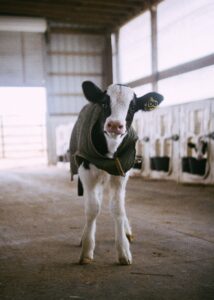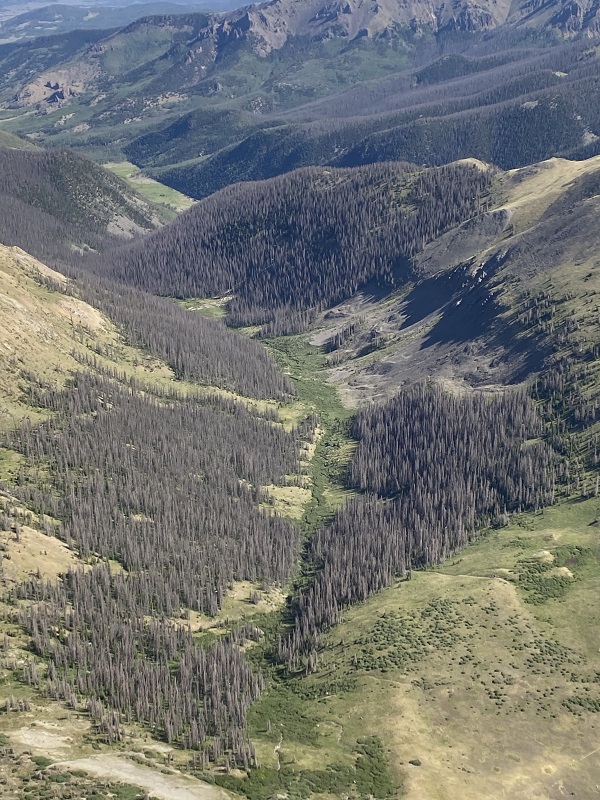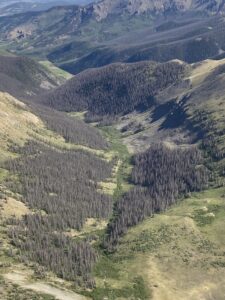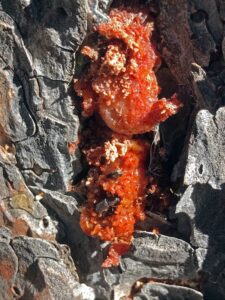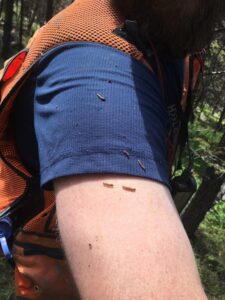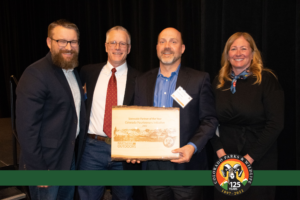
Colorado Parks and Wildlife presents the Colorado Fourteeners Initiative with its Statewide Partner of the Year Award.
CPW’s annual Partners in the Outdoors awards recognize partner organizations that have made outstanding efforts in support of Colorado’s Statewide Comprehensive Outdoor Recreation Plan (SCORP), State Wildlife Action Plan (SWAP) and CPW’s Strategic Plan. Organizations are nominated by CPW staff for their significant efforts in conservation, stewardship, outdoor education and/or research, with award winners selected by CPW regional leadership.
This year, CPW awarded $100,000 in grant funding through its Partners in the Outdoors Grants program. These grants are a unique element of the conference, with all organizations attending the annual conference eligible to apply. Besides the Statewide Partner of the Year and the Statewide Collaboration award, each of CPW’s four regions honors a partner organization for working to uphold those strategic goals.
In the introduction to the awards ceremony, CPW Director Dan Prenzlow said, “The Partner of the Year Awards are presented to those who have displayed outstanding efforts in support of Colorado Parks and Wildlife’s mission. Each of the organizations honored plays an integral role in advancing and balancing outdoor recreation and conservation in Colorado.”
Statewide Partner of the Year: Colorado Fourteeners Initiative
Colorado Fourteeners Initiative (CFI) protects and preserves the natural integrity of Colorado’s 14,000–foot peaks —the “Fourteeners”— through active stewardship and public education.
Established in 1994, CFI hires crews and passionate volunteers to maintain, reroute and repair the trails that take an estimated 415,000 hikers every year to special alpine places. The work conditions require long hikes, the ability to move heavy rocks and 5 a.m. start times to conduct much-needed trail maintenance.
CFI’s work contributes to the goals of SCORP by supporting public land access, building a stewardship ethic and addressing recreation impacts. To provide a more robust understanding of changing conditions on 14er trails, CFI began the Sustainable Trails Program in 2010. This effort was conducted foot-by-foot, with GPS-based inventories of all constructed trail features and resource concerns. Over two phases and five years of data collection, CFI assessed the condition of all 56 principle 14er routes. The updated 2019 “14er Report Card” outlines $12.8 million in needed new summit trail construction projects and a further $5.6 million in major improvements to existing trails. CFI uses this data to both educate and prioritize future work plans. CFI has become the nation’s leading high altitude trail building, terrain restoration and visitor education organization through its ongoing work protecting this special network of trails, and its work has garnered honors and awards from Congress, the U.S. Forest Service and the Coalition for Recreational Trails.
Statewide Collaboration Award: Colorado Department of Education; Colorado Alliance for Environmental Educators
The Colorado Alliance for Environmental Education (CAEE) is a professional organization for environmental educators in Colorado. CAEE was established as a nonprofit in 1989 to serve the shared interests of public agencies, businesses, teachers, community organizations and individuals providing environmental education materials and programs. Since then, CAEE has grown to more than 850 members across Colorado. Members cover virtually every subject discipline from anthropology to zoology, and have learners across the lifespan, from early childhood educators, elementary and high school teachers, camp counselors and university professors.
Fostering a love of the outdoors and an interest in being active stewards of our natural resources starts by building lifelong habits from an early age. CAEE, the Colorado Department of Education (CDE) and CPW have been collaborating on a number of projects to support K-12 students by building a solid understanding of Colorado’s precious natural resources. The Colorado Environmental Education Plan was adopted by the Colorado State Board of Education in 2012 and is currently in the final stages of updating by CAEE, CDE and CPW. The plan includes goals to support educators in strengthening collaborations with key stakeholders, access to professional development, access to outdoor experiences for all students and support in creating pathways for career exploration opportunities. These goals directly align with CPW’s goals to maintain dedicated personnel and volunteers, increase awareness and trust for CPW and connect people to the outdoors.
Northwest Region Partner of the Year: Headwaters Trails Alliance
Headwaters Trails Alliance (HTA) is a nonprofit advocacy organization for trails in scenic Grand County, Colorado. Surrounded by mountain peaks and passes, Grand County streams are the headwaters of the Colorado River. HTA works hard to provide high-quality trails linking towns and recreational areas within Grand County, with secondary trail systems connecting historical, cultural and recreational sites within the local communities.
During the 2021 field season, HTA reported 1,351 hours spent on trails with a total of 6,158 volunteer hours. This includes 530 miles of trail maintenance, 9,718 hazardous trees removed, 2,320 drains cleared or constructed in wetlands, 27,720-feet of new trail construction, and 18,480-feet of trail reroutes to promote sustainability and social trail decommissioning.
HTA works closely with outdoor government agencies, local land management agencies, local municipalities, land developers and CPW to promote sustainable trail systems for public use. CPW has partnered with HTA on a variety of projects to promote developing trails with wildlife in mind, advocate for sustainable trail systems and sponsor educational events around the community.
Southeast Region Partner of the Year: Get Outdoors Leadville!
Get Outdoors Leadville! (GOL!) supports a mission to deepen the community’s connection to the natural world by expanding equitable access to culturally informed and enriching outdoor experiences.
GOL! is dedicated to helping the Leadville community to find connections in nature, and they work to facilitate access and remove barriers so that all can enjoy the outdoors. They partner not only with CPW but with other local organizations to support outdoor community and school programming. GOL! works with many local and trusted community-based organizations to help expand their reach. One such organization is Full Circle of Lake County whose mission focuses on youth development, community empowerment and family services. Full Circle also works with immigrant families in Leadville and helps GOL! bridge the gap between Spanish-speaking members of the community. Other unique programs they launched include a Latinx Family Campout program. GOL! also expands its reach beyond Lake County with its Taking Kids Outdoors training for teachers and administrations across the state. The training focuses on teaching how to take students and their learning outside in a safe and inclusive way.
Northeast Region Partner of the Year: Jeffco Open Space
Jeffco Open Space (JCOS) was founded as a land conservation organization in 1972 by PLAN Jeffco and The League of Women Voters of Jefferson County. Funded with a one-half of one percent sales tax, JCOS contributes to city and park district projects and preserves more than 56,000 acres, manages 27 open space parks and more than 261 miles of trails in Jefferson County, Colorado.
The willingness of JCOS to assist CPW with wildlife management, wildlife education and hunter outreach efforts is exemplary. From raptor monitoring to coordinating access for CPW hunter outreach programs, and providing support when contentious wildlife conflicts arise, JCOS staff go above and beyond to provide detailed documentation of wildlife sightings, wildlife population monitoring and wildlife conflicts on JCOS properties. This communication with CPW on all wildlife matters helps ensure that a collaborative approach is taken when solving wildlife management challenges in the county.
JCOS’s partnership and support of CPW outreach hunting programs, disease monitoring, and an elk radio collar study are helping pave the way for better management of healthy elk and deer populations. JCOS works to keep wildlife in mind, and their actions to conserve wildlife and habitat to ensure healthy, sustainable populations and ecosystems are right in line with the CPW Strategic Plan.
Southwest Region Partner of the Year: Friends of Youth and Nature
Friends of Youth and Nature (FOYAN) promotes, supports and facilitates opportunities for youth and family to go outside. Their goal is to get kids outside in nature to explore, learn and have fun.
The FOYAN is a leader in outdoor experiences for youth in the Colorado counties of Montrose, Delta and Ouray. FOYAN staff is dedicated to bringing kids to the outdoors in collaboration with their community partners, and work through their partnerships to better understand what the needs of the youth are so they can customize and accommodate a positive outdoor experience. Each outing they create provides opportunities for youth to build knowledge, awareness and personal success in a natural setting through experiential learning. Through grant funding, FOYAN has removed obstacles, particularly for underserved youth. Their approach is to comprehensively plan and provide activities, including equipment, transportation and food as needed to foster a happy outdoor adventure.
CPW’s SCORP and Strategic Plan aligns with FOYAN’s mission to connect people to the outdoors. An example is a recent grant designed specifically for families associated with CASA and the Families Plus Organization out of Delta county to have access to outdoor equipment so underserved local communities have the ability to spend quality time outside and enjoy Colorado’s great outdoors.
About the Partners in the Outdoors Conference
CPW hosts its annual Partners in the Outdoors Conference to provide a platform for those involved in the outdoor industry to network, collaborate and stay abreast of current issues and initiatives. This year’s conference was held in Vail from April 18 – 20, 2022, with over 600 participants from more than 250 organizations attending.
Goals of the conference include: providing professional development on current issues affecting the industry, providing funds for our Partners in the Outdoors Grant program, and recognizing the work our partners across the state do to advance outdoor recreation and conservation through our Partners in the Outdoors Awards program.
More information about the Partners in the Outdoors Conference is available on CPW’s website.

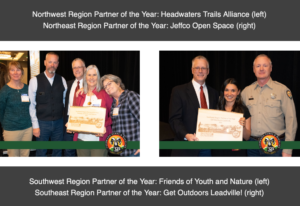
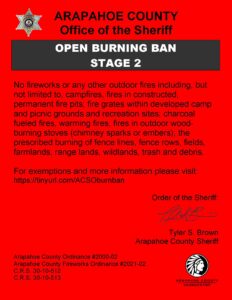
 Photo by
Photo by 